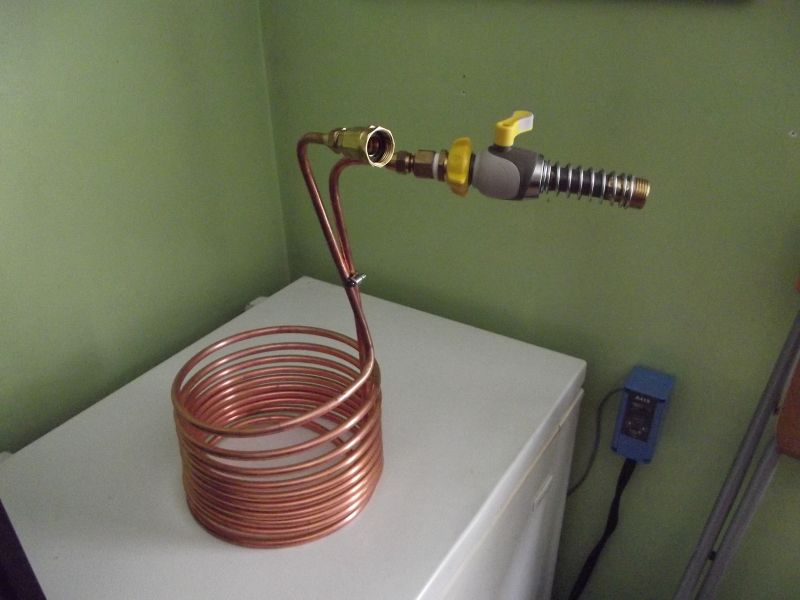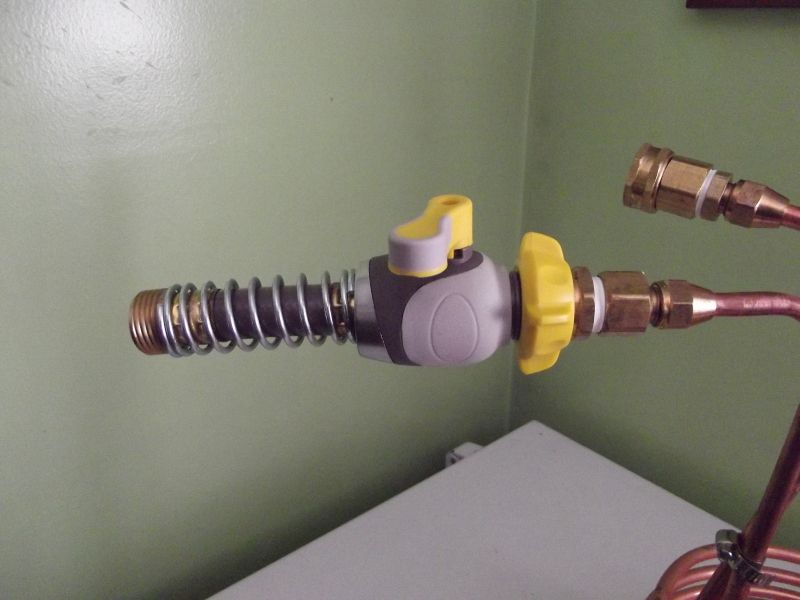I thought i would post this up to give some ideas on how to make your wort chiller more efficient. The biggest thing is i see people who buy one with the kitchen faucet type of adaptors. This is fine if your house is cool enough so you cold water is..well cold ! In the summer for some there house is in the 80s to high 70s. your water and pipes will be too !
Before you buy a wort chiller check your water temps. You may find water coming out of your hose faucet "witch comes from the ground pipes" will be colder than when it runs into your house. I was for me so i went the hose connector route.
One trick i tested was to put a ball valve on the end of my hose. something i stumbled on rather than knew. I added a ball valve so i could turn the water on at the chiller. this way if i had a leak or spray i was in control right there. What i found out is if you dial back the water flow. You give the water enough time to "soak" the heat before coming out of the chiller. Full blast did not cool as fast. Cooling 4g of wort on 15 min to 65deg.
It was interesting just how fast the wort temp dropped by doing this. Also i did stir the wort while cooling.


Before you buy a wort chiller check your water temps. You may find water coming out of your hose faucet "witch comes from the ground pipes" will be colder than when it runs into your house. I was for me so i went the hose connector route.
One trick i tested was to put a ball valve on the end of my hose. something i stumbled on rather than knew. I added a ball valve so i could turn the water on at the chiller. this way if i had a leak or spray i was in control right there. What i found out is if you dial back the water flow. You give the water enough time to "soak" the heat before coming out of the chiller. Full blast did not cool as fast. Cooling 4g of wort on 15 min to 65deg.
It was interesting just how fast the wort temp dropped by doing this. Also i did stir the wort while cooling.





